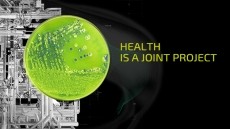FDA pushes cell-based production of viral vaccines
aid manufacturers in developing safe and effective cell-based viral
vaccines, hoping it can modernise America's manufacturing network
and speed up production.
The guidance contains information for determining the suitability of a cell culture for manufacturing, as well as testing and validating the safety and purity of the cells used in the development and production of viral vaccines.
It also provides information on testing at different stages of production and quality-control test methods for cell substrate and adventitious agent issues.
Most influenza vaccines are currently produced using embryonated chicken eggs, so there is value to improving the timely production of new vaccines in large quantities to combat a potential future influenza pandemic.
With cell-based manufacturing, cells can be frozen, stored and thawed as needed to produce more vaccine, allowing for surge capacity in an emergency.
Concerns about bird flu and bioterrorism have made the issue a priority for the Bush administration; in May the US Department of Health and Human Services (HHS) handed out $1bn (€0.78bn) among five drugmakers to develop cell-based technologies for making flu vaccines.
The new guidance updates recommendations to the 1993 FDA document "Points to Consider in the Characterisation of Cell Lines Used to Produce Biologics" and has been published as a draft document to allow for 90 days of comments before it is finalised as the agency's thinking on the topic.
"This guidance document provides important advice for manufacturers on using cell cultures to produce needed vaccines against infectious diseases and to use modern technologies to assure that they meet the highest safety expectations," said Jesse Goodman, director of the FDA's Centre for Biologics Evaluation and Research
"The advice will assist manufacturers, including those that make influenza vaccine, both to develop new and better vaccines and to boost production capacity, making us better prepared for the threat of a future influenza pandemic and other infectious diseases."
The number of different cell substrates used in currently licensed vaccines is limited, yet the development of new-generation vaccines will likely involve a wider variety of cell substrates, both for the isolation of virus seeds and vectors, and for vaccine manufacture.
However, due to limited experience with new cell substrates, manufacturers should develop and apply the best technologies available to assure that these new cell substrates are safe, according to the new document.
The FDA says manufacturers should evaluate cell substrates on a case-by-case basis, but characterisation of any cell substrate used for the development and manufacture of a vaccine should address certain general issues that might affect the safety and purity of vaccine products manufactured in them.
Some of these issues include karyotype and tumorigenic phenotype of the cell substrate, the identity and genetic stability of the cell substrate and virus seeds and the requirement that the vaccine product be free of extraneous infectious microorganisms and potential oncogenic agents.
The qualification of cells intended for use in the manufacture of biologicals includes assessment of the history and general characteristics of the cells, the cell banking system and the characterisation of the cells through quality-control testing.
A copy of the document, "Guidance for Industry: Characterization and Qualification of Cell Substrates and Other Biological Starting Materials Used in the Production of Viral Vaccines for the Prevention and Treatment of Infectious Diseases," is available online >here.









